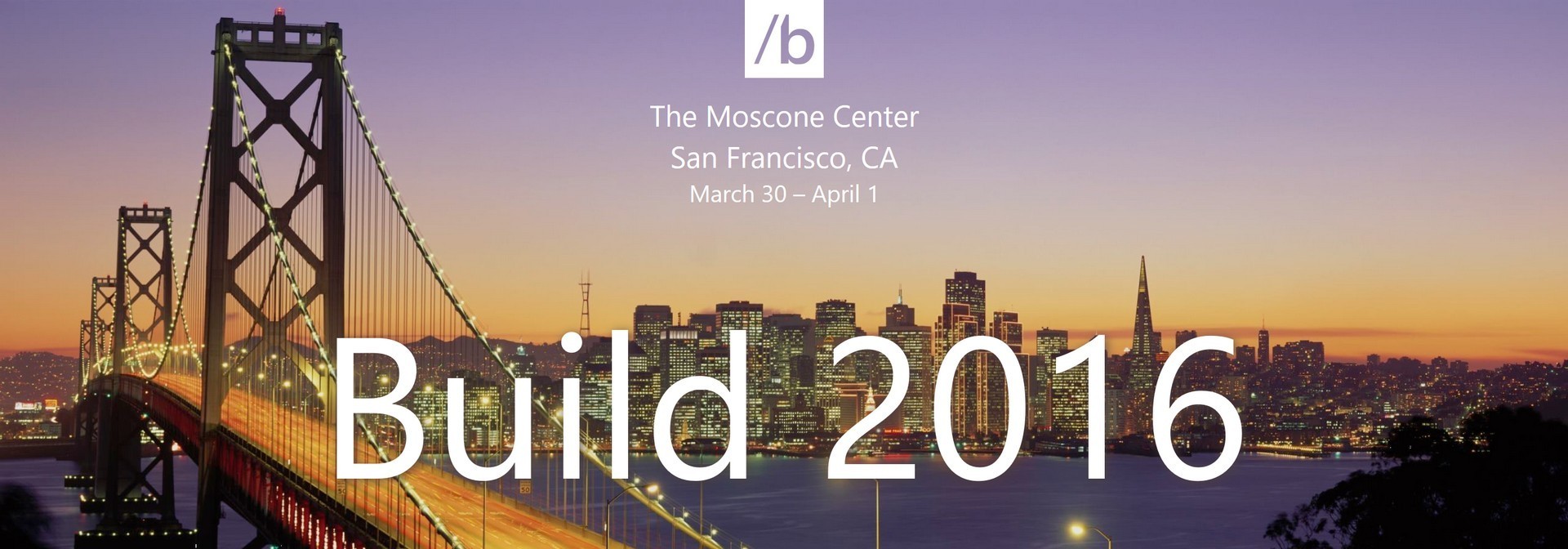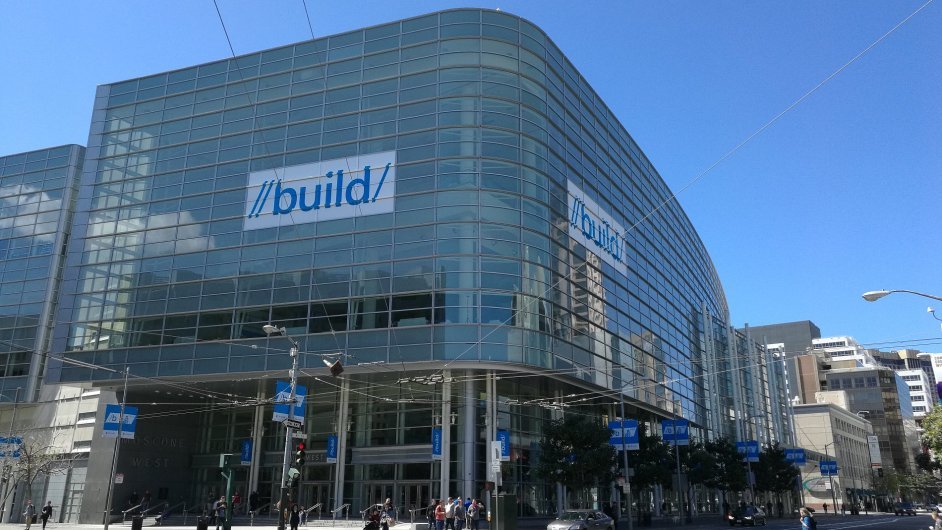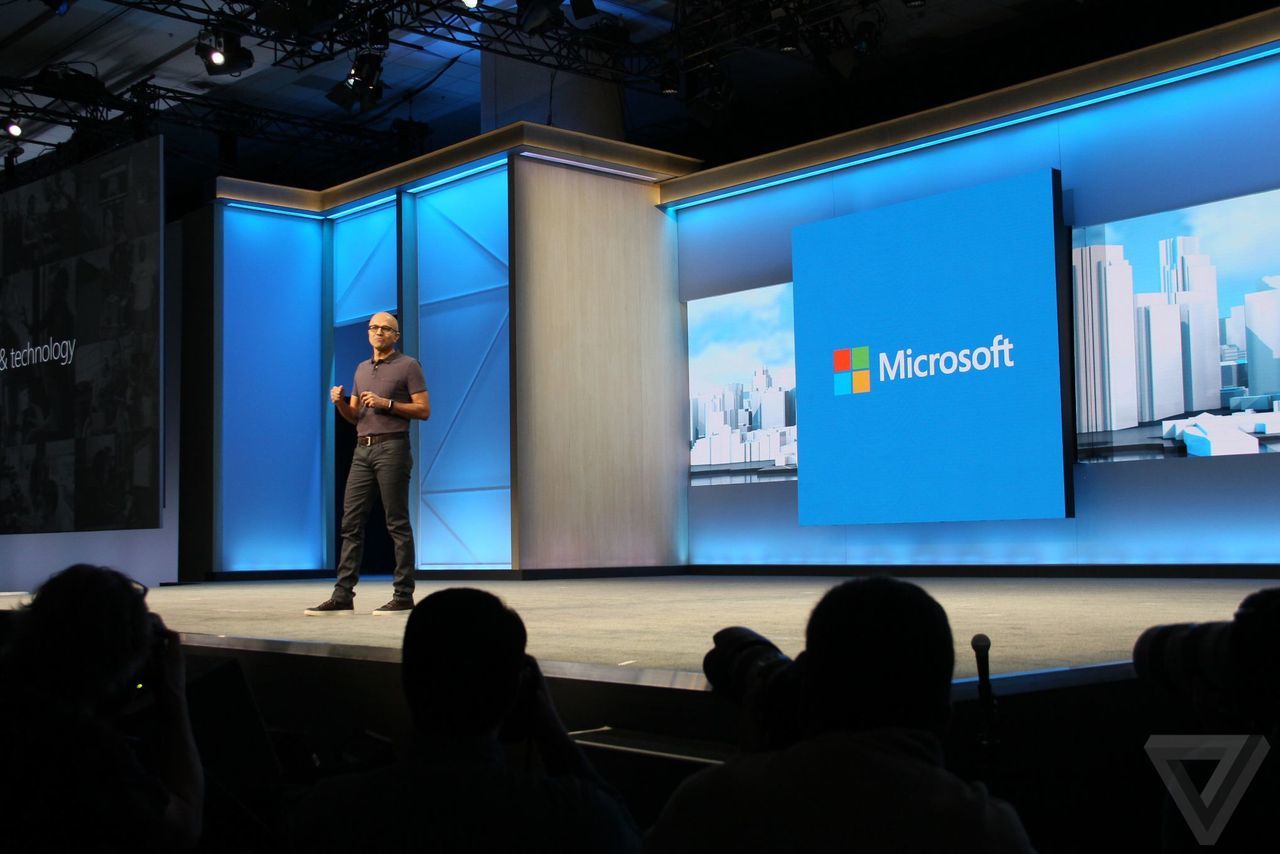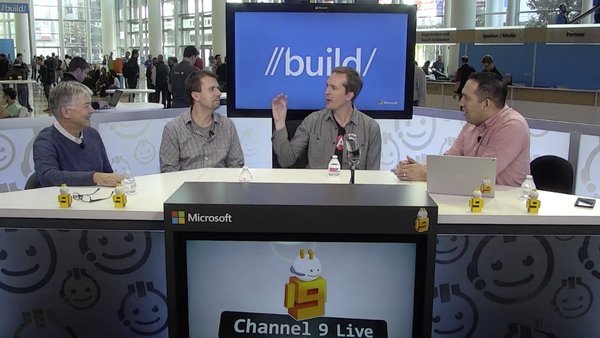// BUILD / 2016: how it was
Not so long ago, our largest developer conference was held: // BUILD , at which many important announcements were made ( about Xamarin , about the cloud , about Bot Framework ). However, in addition to the announcements, it is interesting to read about how the conference itself took place, what atmosphere it had, and what was interesting for participants. So that you can plunge into the atmosphere of the conference a little, we asked our partner students who were at it to share their impressions. The article below was prepared by Evgeny Grigorenko and Ilya Ryabukhin .

This year, we, the three Microsoft student partners, were lucky enough to attend the // BUILD / 2016 conference. And in this article, talking about // BUILD /, we would like to cover not so much the announcements and updates of existing technologies, but how to talk about such third-party things as the registration process, organizational issues, technology exhibition and the American Imagine Cup final coinciding with the conference itself.
About the venue
This year, like many times before, the conference was held at the Moscone Center, the same business center that America's favorite companies have, which will consistently host Google IO and Apple WWDC conferences in a couple of months. But unlike previous years, this // BUILD / was waiting for an innovation - the addition of additional space in the form of an underground conference center standing across the street from the Mariot Hotel. On the one hand, this made it possible to conduct many parallel reports and significantly expand the number of topics addressed, but at the same time, such a placement definitely made me run, but thirty-minute breaks between sessions and everywhere-hung panels with information about the crowded audience saved the situation. This, at a minimum, made it possible not to run for nothing.
Speaking about the very San Francisco in which the conference was held, it is worth noting the strong diversity of the city. On the one hand, a tourist unfamiliar with American reality meets the world of skyscrapers in the financial district with all the grandeur of its architecture, on the other - Pacific beaches and the private sector with cozy and colorful two-story houses. And do not forget about the two symbols of the city: the Golden Gate bridge and the historic tram with the fancy name Cable Car (cable car?). In general, the pastime was limited not only by the conference, the city itself provided many opportunities, allowing you to take a break from the surging information and usefully spend free time.

About registration and flow control
Those who have attended large international conferences at least once know that their organization is far from the simplest thing. And the problem is not the invitation of eminent speakers or the implementation of complex logistic solutions, the peculiarity is to organize the process in such a way that all thousands of people do not feel any delays and accidentally do not appear in the center of a huge crowd of people. It showed up in the details, but with these details, a well-thought-out and honed solution was defined over the years.
For example, registration for the conference began a day before the first events, and the process itself was as automated as possible. Firstly, all the necessary information like name, place of work, mail was collected at the time of registration on the site. On the spot, the process was divided into two stages: self-registration at a self-service construction site and a final, already human, verification of documents with the subsequent issuance of a badge. Moreover, automatic registration was reduced to a simple verification of previously entered information, and to speed up authentication, it took place using QR codes sent in advance to all participants by mail. After confirmation, the badge was automatically printed on a specialized printer, and the participant was informed of the number of the document check counter on which it could be obtained.

With lunches, unlike registration, the task was even more complicated - it was necessary to feed all people in a very limited period of time of one hour and at the same time give them the opportunity to go about their business and have time to get to the place of the next session. Therefore, in the allotted time, two or three racks with products pre-packaged in paper bags for easy carrying appeared on each floor of the business center. But all this in practice was only part of a large process for the effective management of the flow of people, which manifested itself many more times throughout the conference.
About Keynote and Announcements
On the day the conference started, after a long flight to San Francisco, feeling like a lark due to a sharp change in time zones, I unexpectedly found myself at 6.40 in the morning at the entrance to the business center. And by that time there was already a line ... After 20 minutes, by the time the conference doors opened, the line of those who wanted to take better seats reached already the end of the quarter and turned around the corner.
Keynote itself began with a 20-minute appeal by Satya Nadella, who, like last year, talking about his vision of the corporation, identified three main areas: personal computing, intelligent cloud and re-creation of business processes. Then there were announcements, the conversation about which continued the next day, taking a total of about 5 hours. Probably everyone who comes across Microsoft technologies every day found something of their own there. Of the major ones, of course, this is the transfer to the Open Source of the recently acquired Xamarin, an overview of the many innovations of the anniversary update of Windows 10 and, just as importantly, the start of delivery of the development version of the augmented reality glasses HoloLens.

There were many other interesting announcements, such as the launch of Azure Functions and Microsoft Graph. But against their background, innovations in the concept of personal computing were especially distinguished. It all started with the official launch of Microsoft Cognitive Services (formerly Microsoft Project Oxford), a suite of machine learning services available as easy-to-use REST APIs. Then came the storyblind programmer Sakib Sheikh about Seeing AI, which gives him the opportunity to receive a verbal description of the world around him based on these services. Frankly, in my personal list, these are the news that claim to be the largest announcement of the conference. Because this is not just another service, but this is a whole shift in the concept, proving that modern technologies are becoming quite adaptive and intelligent and are ready to begin to completely change people's lives for the better.
Another major announcement in this area was another conceptual shift, called Communication as a Platform. Its essence is that even though we are still as far from real artificial intelligence as we did decades ago, communicating with a machine in a natural language can become an everyday reality in the quite distant future. Microsoft's contribution to this idea is to further expand Cortana’s capabilities and integrate it into Skype to create a user experience that essentially brings it closer to the original prototype from the Halo games. Complementing this picture is the announced Bot Framework , which gives developers the ability to write intelligent text bots to create truly natural communication.
About Reports and Channel 9
Keynote was followed by the main content of the conference - sessions, and by the way, there were a little less than 500. By type, they were divided into 3 types: hourly reports, hourly laboratory work with a presenter, and twenty-minute reports at the exhibition. The first two types corresponded to the main content of the conference from the theoretical and practical sides of the discussion, while the latter addressed either relatively short questions or the “up-to-date” announcements of the past years. In addition, throughout the conference there was a zone of small independent laboratory work where everyone could try almost any of the modern technologies of the corporation. Also, during any break, Channel 9 studio attracted special attention, where recognized experts and people, those responsible for the development of various technologies answered questions from the presenters and the audience in the format of thirty-minute interviews. Questions were collected using the Twitter service, and therefore, any online viewers could feel themselves part of the conference and get answers to their questions.

As was noticeable in many respects even at Keynote, the sessions focused on the summer update of Windows 10 and the corresponding extension of the universal Windows platform. No less important in the context of the number of dedicated reports was a comprehensive review of the concept of personal computing from purely technological issues to practical examples. Closing the list of leaders was the development of solutions in the field of the Internet of things (especially in the format of laboratory work) and the use of cloud technologies Microsoft Azure and Office 365. Other issues like the future of C #, .NET and Visual Studio were given much less time, since the main announcements in the context of .NET Core were made last year. By the way, the recording of all reports is now available in a special section of Channel 9 .
About the technology hub and HoloLens
The main social venue of the conference was the hub. The hub is a large exhibition of several hundred square meters, serving as a meeting place for participants, speakers and technology experts. There were stands both for all the main products and announcements of the corporation itself, and for the decisions of Microsoft partners. Among other things, a system was created inside the hub itself to find the right speaker: the participant had to enter the name of the technology or the name of the speaker, immediately information was given where and when it would be possible to find expert help.
The zone with the announced services included in the Cortana Intelligence Suite was especially popular. First of all, due to the large number of different demos and the general visibility of the technologies themselves. The exhibition of devices such as Band, Surface Book, etc., and areas devoted to various issues of Azure and Windows 10 development were equally popular. In addition, it is worth noting a real exhibition in the museum sense of the word, devoted to changes in the design of Windows from the time of the console, square bags and floppy disks to the modern trends of the universal Windows platform and HoloLens. Each era was presented in the form of a small stand with a description, and the consultants present at the venue were not only ready to tell details about the exhibition,

The largest exhibition area was dedicated to two different HoloLens demos. In order to restrain the excitement, access was made only on tickets that were either handed out to the lucky ones who were in the right place at the right time, or were issued in the form of incentives for some achievements. The first demo was devoted to the experience of using HoloLens at home and included such steps as decorating a room with holographic paintings, watching a video through the wall and adding sculptures in the form of a large breathing dinosaur to the interior. The second demo "Destination: Mars" was even more interesting. It was prepared by NASA and is expected to be launched for mass use only from the beginning of the summer of this year. The participants of the // BUILD / conference were given a unique opportunity to try it first. As the name implies, the essence of the demonstration was both simple and innovative - people were in the middle of a three-dimensional model of Mars, recreated from images of the Oppotunity and Curiosity rovers, and parallel explanations were made using a high-quality three-dimensional model of one of the mission members. After participating in the first demo, I’ll say only one thing: HoloLens is not a myth or a trick, it exists and works exactly as shown in the most fantastic videos!
About the Imagine Cup American Final
The Imagine Cup , as many may already know, is an international student competition of IT projects, in which participating teams compete in three categories: games, innovations and social solutions. This year, the American final of this competition was combined with the conference and was held in a special place allocated for this in the hub. Unlike the Russian final (it will be in Moscow on April 23) American distinguished himself by deep integration into the conference itself. All teams were given the opportunity to attend any reports and communicate with experts not only after sessions and in the hub, but also during specialized meetings with technology experts during lunch. The day before the final, all projects were presented at a specialized exhibition on the ground floor, where everyone could discuss the solutions presented, find out all the details that were of interest to them and personally test the solutions presented. All projects were distinguished by something special, some of the most memorable were:
- simulator for certification of newly minted police officers;
- a game that identifies and solves children's vision problems;
- a mobile application that allows you to read Braille from photographs;
- several VR games and much more (recording presentations of all finalist projects are already available on Channel 9 !).
Conclusion
To summarize all that has been said, the Build 2016 conference is the most important event in the Microsoft ecosystem, interesting for developers around the world. It impresses with the scale of announcements, the range of technologies covered and the level of immersion in them. In general, the event made a very pleasant impression and, most likely, will be remembered for a long time by its atmosphere.
